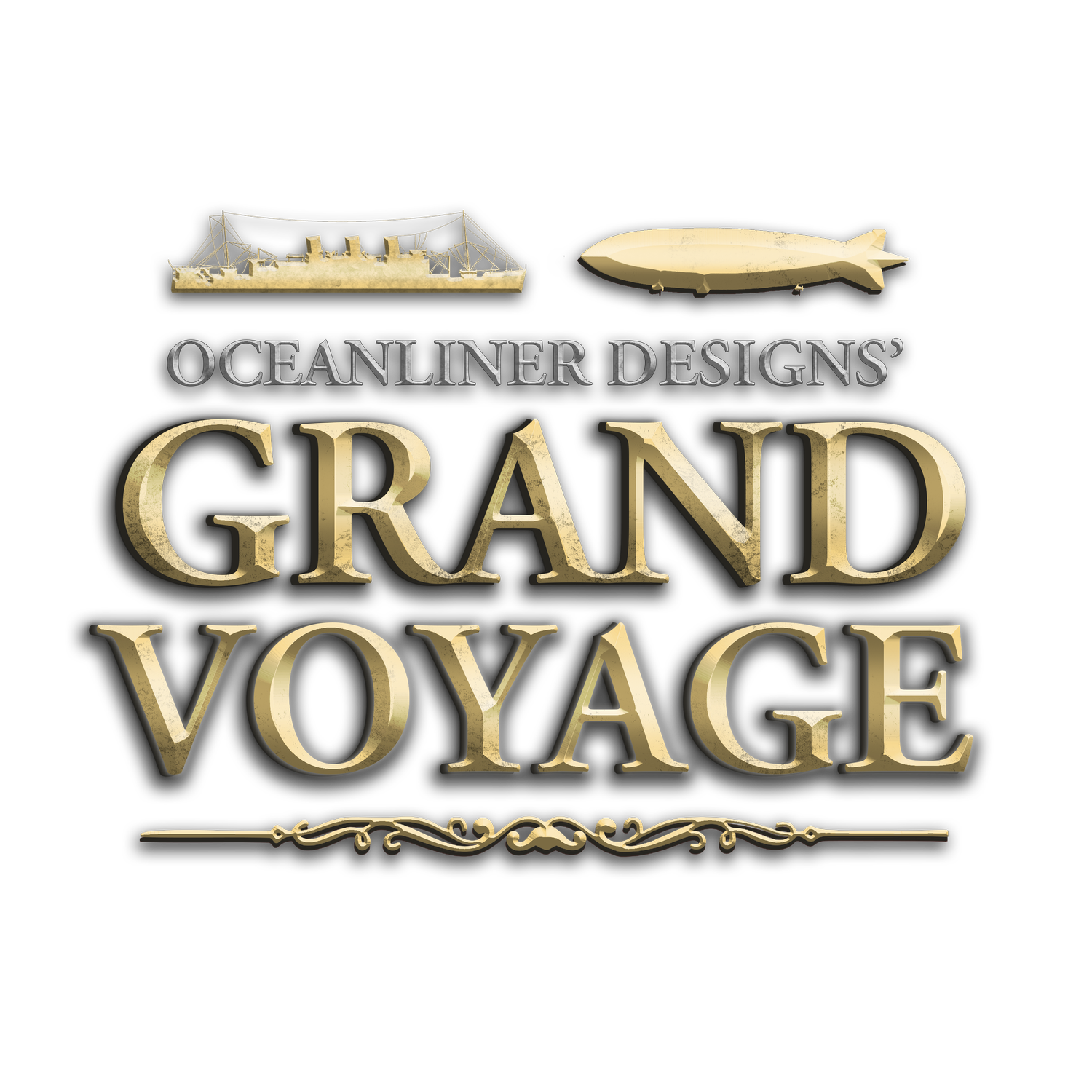Recreating Carpathia
How the historic savior of Titanic was reborn as part of Oceanliner Designs’ GRAND VOYAGE.
Known as the “Hero Ship of Titanic”, the RMS Carpathia seemed a perfect fit for the GRAND VOYAGE fleet. A comfortable and picturesque ship whose history is the stuff of legends - it was a no-brainer. Unfortunately, what our beloved hero ship was lacking was a set of concrete plans and definitive reference images to draw from. So how did we go about recreating Carpathia digitally for GRAND VOYAGE with precious little information to rely on as a guide? That’s where the ever-talented 3D modeler and exterior expert Matteo comes in!
Matteo, better known among the team as Met, took the time to lay out some of his process which resulted in the beautiful and intricately detailed exterior model that has now made its way into engine to be part of Grand Voyage proper. Read on to learn the fascinating tips and tricks Met implemented to make this all new version of Carpathia a reality!
The Hull
The hull of a vessel is the core of the project, everything built around and on top of the hull depends on its accuracy and the way it’s replicated. Ship builders make drawings called body plans or hull lines plans which practically represent an extremely accurate, scaled version of the hull which are used to build stations or ribs, then the hull plates are riveted or welded around them to finally form the hull.
Now, having these drawings makes digital hull building a lot smoother but unfortunately Carpathia’s original body plans were lost and are possibly gone forever.
I’m Matteo, main exterior modeler of this ship, and in this article I will attempt to tell how I and the Grand Voyage team managed to build the most accurate digital replica of RMS Carpathia.
The lack of these fundamental drawings made this project a challenge right from the beginning, and I had to work with what was available initially. Thankfully, some of it was still original material so we didn’t have to debate on their accuracy.
The original drawings in question are the “Profile and deck plans” and the “Midship section”, both crucial to lay the first lines: the sheer, Shelter Deck and Orlop Deck, respectively the highest and lowest decks outside the superstructure. These are what helped me the most to give an initial shape to the hull. To finalize the shape, curves, and plating, I had to rely almost entirely on photographs and standard shipwrighting techniques.
3D rendition of the hull of SS “Carpathia”. The base mesh lacks the ‘propeller wings’ for simplicity and are added in a later stage. The horizontal lines represent the flow of the strakes (series of hull plates) while the vertical lines provide the volume of the hull.
The Frames
The frames or ribs are part of the skeleton of a vessel, for our purposes we didn’t need to add physical steel frames because they are usually covered with wood, they are added only in case there is one or multiple spaces that have exposed steel frames and at the time of writing this article we haven’t established that yet.
Nonetheless, knowing how many frames there are and where they’re placed is crucial for a consistent and accurate build, it makes the job smoother for me, researcher Robin, and interior modeler Fil as we all have a solid, mathematical base to work on.
Thankfully, the steel reports for Carpathia’s construction and trials have been preserved, we know for a fact that she had 240 frames each spaced 27 inches (68,58 cm) apart, with this information transferred to 3D we can begin to understand where everything is, among these things there are: portholes, gangway doors, coal bunker shutters, nameplates, anchor hawses and plates’ butts.
Rendition of the frames overlaid on the side of the hull
The Superstructure
Thanks to the previously established frames, building the superstructure and everything on Shelter Deck wouldn’t be a mystery. By this point in the process, we were also lucky enough to acquire a set of General Arrangement Plans from the Merseyside Maritime Museum in Liverpool. G.A. plans mostly, if not only, focus on the inside of a ship, but they would still provide a few key useful elements - they told us where each bulwark and beam would be, location of portholes, doors and many other things like equipment and vents.
For reference, Carpathia’s Shelter Deck is the highest deck and combines the forecastle and the poop deck which sometimes are isolated decks, but in this case, they’re all fused together forming a continuous surface with passenger enclosed spaces in the middle.
Rendition of a section of the superstructure.
With a step-by-step, meticulous process like this the end result is a faithful replica of SS Carpathia that provides sceneries both on board and from afar that look like photographs from her time. Walking her decks in Grand Voyage will invoke the feeling that you’re there in person, truly exploring the ship as passengers did over 100 years ago.
So, what are your thoughts? Digitally reconstructing the hull of a ship “from the keel plates up” as it were is no easy task, but Matteo clearly understood the assignment. We’re thrilled to include this newly-recreated version of Titanic’s hero ship as post-release DLC in Grand Voyage. Keep your eyes open for future updates and teasers - there’s way more where that came from!
Bon Voyage for now!






